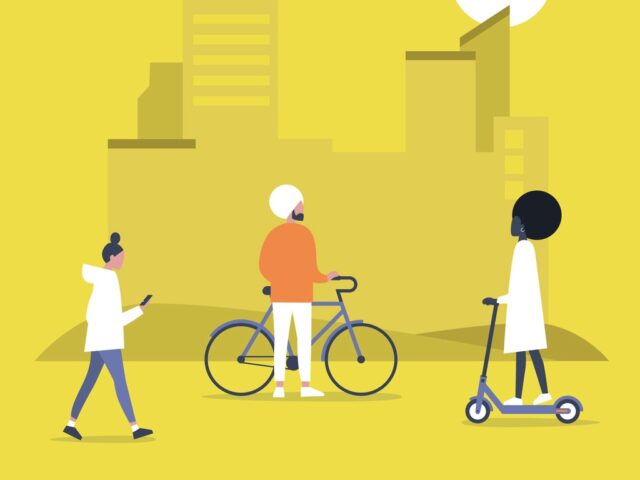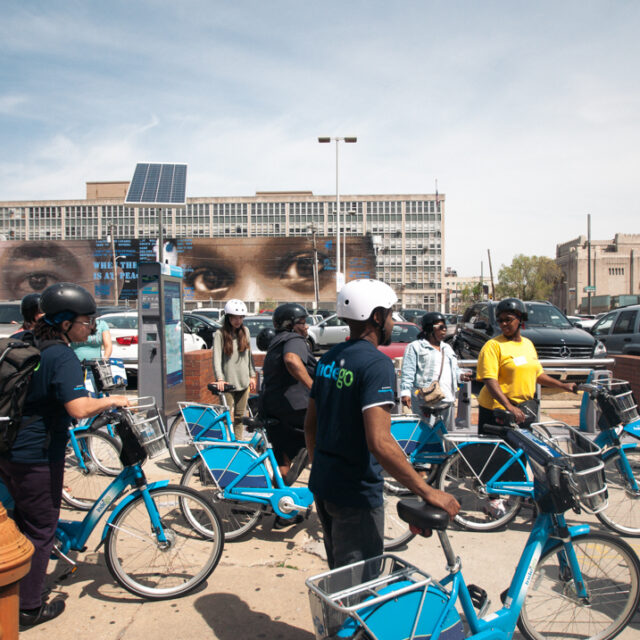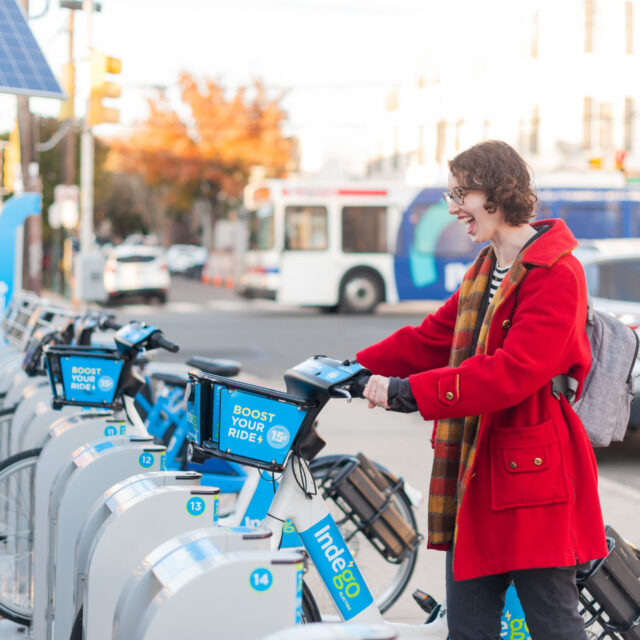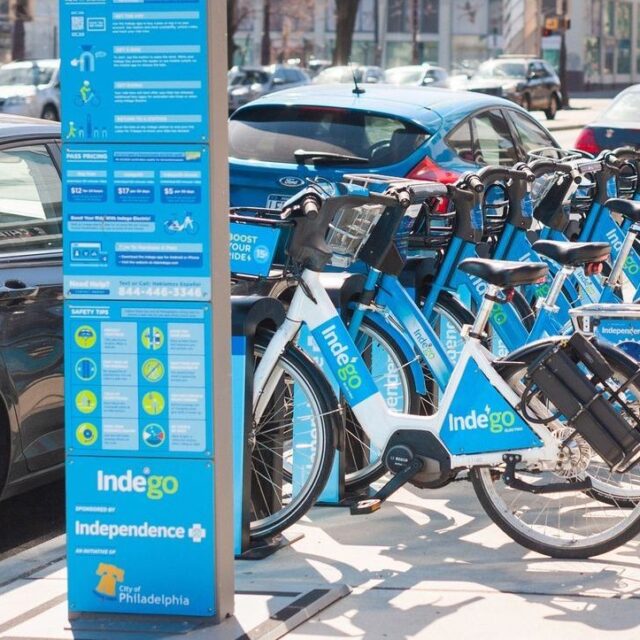How To Build In Equity From the Start
by Kiran Herbert, Communications Manager
April 7, 2023
A list of nine best practices, drawn from our experience working with shared micromobility systems around the country.

For most systems, simply launching can be an incredible accomplishment. After all, figuring out an operational model and securing the necessary funding, permits, and equipment is no easy task. With all the other necessary considerations, building in equity from the start can often be seen as a “nice to have” versus a “must have” system component. This is a big miss for several reasons.
First, there’s the business case: Shared micromobility systems that are more inclusive — or put another way, systems that serve a diversity of users — are more likely to work better for everyone. When we take the time to ensure our bike share and scooter share systems better serve women, for example, we’re actually ensuring that they better serve all users, thus building a larger potential market.
Many equity “best practices” — things like conducting public engagement or translating marketing materials — can also help set systems up for success in general, broadening a system’s reach and helping embed it more effectively in the local community. While it’s always possible to create a more equitable system, it’s harder to backtrack on equity initiatives versus embedding them from the start.
These nine actions will help any shared micromobility system take equity into account from the start, ensuring that historically underrepresented communities have the same access to bike and scooter share as anyone else.
1. Do Community Engagement Early and Often
The importance of conducting quality community engagement is something that we’ve written about a lot. Engaging the public in your system can’t be an afterthought — every operator needs a plan for building relationships, which should include a strategy for seeking out people of all backgrounds and engaging them in conversations about shared micromobility. This can be done by partnering with community-based organizations, through community meetings, surveys, and focus groups.
Time and trust are key, meaning you have to invest time in reaching community members personally and building trust with them. It’s about communicating what you plan on doing as a company (how your system will work, what using it will look like, etc.) but also listening to and incorporating feedback from community members (what would best serve them, how they plan on using the system, what’s working, etc.). If you need to alter your pricing or if you plan on expanding your system, it’s vital to have the infrastructure in place in order to effectively communicate with community members as your system evolves.
2. Build Partnerships
It’s important to reach people who aren’t necessarily tapped into traditional engagement processes. You can do that by building partnerships with community-based organizations (think nonprofits, housing organizations, or health centers), as well as government agencies. These are groups that have already built trusted relationships with historically underserved community members and who can help facilitate their relationship with shared micromobility. By specifically targeting the traditionally marginalized — the often low-income and BIPOC who don’t often get a seat at the proverbial planning table — you can get closer to building an equitable system that works for everyone.
3. Use Equity to Design Your System Footprint
Many municipalities have equity or priority zones, and it can be a best practice to align your station footprint and/or balancing zones with them. If your city hasn’t made this information available, it can be helpful to speak with city planners and get a sense of where stations and/or vehicles could help serve a gap in transit service or better connect residents to essential services.
While there’s always a temptation to only serve busy downtown areas, equity means considering how people from all parts of a city can access jobs, hospitals, grocery stores, schools, and the like. A constant re-evaluation and tweaking of this process is necessary to ensure your footprint continues to prioritize equity.
4. Make Your Pricing Accessible
Operators should consider pricing models that ensure affordability for all users. This can include discounts for low-income riders or affordable flat rates for hourly or daily use. Low-income or equity programs that offer reduced pricing to qualifying individuals can help ensure your system meets the needs of those who are least likely to have access to other forms of transportation. Soliciting a sponsor, such as an insurance or healthcare provider, can help offset the cost of these types of programs. Data has shown that participants in these programs are often the system’s most active users, serving as ambassadors for potential customers.
Systems without funding for a dedicated low-income program might consider a library pass program, where anyone can check out a bike or scooter share membership as they would a book. Many universities and colleges will also financially support systems in exchange for their students being able to ride for free. These sorts of programs cost a fraction of the price and are often attractive prospects for foundations and other grant-giving organizations — crucially, they also help a system remain accessible to all users.
5. Choose Your Vehicle Design(s) Wisely
Research has shown that women tend to use bike and scooter share less than men and while there are many reasons for that, one of them is vehicle design. Many bikes and scooters are built to accommodate a larger male frame and don’t include baskets or a way to store purses and other belongings, which women are more likely to have on their person.
Similarly, older riders are underrepresented in bike and scooter share — things like electric assist bikes and scooters that feel incredibly sturdy can make a huge difference for this population. If you have the option of incorporating adaptive vehicles that allow more differently-abled people to participate, all the better. The bottom line: Before making crucial decisions about what type of hardware you plan on using, make sure it works for people of all body types and abilities.
6. Translate Materials
This includes marketing materials but also things like your app, website, and instructions for use at your stations. While full translation services can be costly, more automated services like Google Translate have come a long way and allow organizations to translate into more languages for very little (BBSP’s own website uses Google to translate content into 30 of the U.S.’s most-spoken languages). When advertising for community engagement sessions or posting fliers in a predominantly immigrant neighborhood, make sure you’ve done your research and are speaking to people in the commonly-spoken languages of that community.
7. Get Involved in Policy Decisions
Pushing for things like safe streets and better on-street infrastructure for shared micromobility are significant equity initiatives because these are the things that ensure people of all ages and abilities (especially women and older adults) will feel comfortable using your services. There are also bicycle and scooter policies across all 50 states that present barriers to use for Black communities and other communities of color. As a company, advocating for change can have a huge impact and can play a role in ensuring your system is successful.
8. Offer Learn-to-Ride Classes
Educational classes are a cornerstone of any good shared micromobility system, which can’t truly be equitable without the work of bringing in new riders and helping them feel comfortable navigating city streets via bike or scooter share, which can be a whole new learning experience. The more people you show how to specifically use your hardware, allowing them to get comfortable and ask questions, the more likely they are to use it on their own.
9. Be Transparent With Your Data
Be transparent with your data, including usage patterns and service areas. Doing so can help communities and stakeholders ensure that the system is serving all users equitably.
The Better Bike Share Partnership is funded by The JPB Foundation as a collaboration between the City of Philadelphia, the National Association of City Transportation Officials (NACTO), and the PeopleForBikes Foundation to build equitable and replicable bike share systems. Follow us on LinkedIn, Facebook, Twitter, and Instagram or sign up for our weekly newsletter. Got a question or a story idea? Email kiran@peopleforbikes.org.



